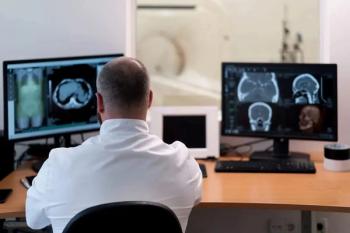
Give Us This Day, Our Daily ICU Portable
Because no one is paying attention to them anyway, are all these diagnostic tests really necessary?
One of the most harshly memorable experiences of my internship was rotating on hospital wards such as the ICU and CCU. Anywhere from 12 to 30 hours at a stretch of bustling back and forth in windowless rooms full of electronic beeps and boops, tending to an endless onslaught of menial tasks that higher-level docs couldn’t be bothered with…yet lower-level personnel (i.e., nurses) were supposedly incapable of. Or at least, exempt from having to do.
A prime example: Routine bloodwork. In prep for morning rounds, all patients had to have a daily batch of labs (complete blood count, chem-7, arterial blood-gas if on a ventilator, etc.). And yes, the bloods had to be drawn by the intern in our institution.
It flew in the face of what we’d learned in medschool. Not long before, we’d all dutifully learned that you didn’t just order tests willy-nilly; you had to have a specific reason for each investigation. Not just because doing otherwise was sloppy medicine, but also because every needless test drove up the cost of healthcare and hassled the patient in the meantime.
Yet there we were, doing daily bloods on everyone because, if we didn’t, our senior residents and/or attending physicians would have a thing or two to say about it. Nobody really explained the rationale; it was sort of left to the interns to figure it out for themselves that these patients were the sickest of the sick, and more often than not, unable to speak up for themselves.
You couldn’t count on them piping up that they were experiencing a new symptom, for instance, so your only clue that they were taking a turn for the worse might be found in their bloodwork. And, in their condition, detecting an unfavorable change now versus in a few hours might make all the difference in the world regarding their clinical outcome.
No great surprise that, having determined over a year earlier that I wanted to do radiology (not internal medicine), I was only too happy to leave that part of my training behind. Never again would I have to deal with a reason-less daily battery of diagnostic tests.
“Ha,” proclaim the radiologically savvy readers, most of whom are painfully familiar with the other ICU routine of getting portable chest x-rays for each patient at least once per day. The rationale is the same: You need all the clues you can get as to what’s doing with these sick folks, and the CXR might be the only way you’ll know how well expanded the lungs are, if pneumonia is new, worse, the same, or improving, and whether any of the support equipment has been moved from its proper position.
One little detail that gets lost in the shuffle for most of the players in this busy little drama: The clinical history. These routine imaging-studies, often performed without a specific reason, still demand a “reason for exam.” This needs to be filled in when ordering the study, and to be dictated in the rad’s report.
Having read an increasingly obscene number of such studies as I’ve covered various hospitals over the years, I’ve seen that this is not even a speed-bump for the folks ordering these exams. 99 percent of the time, there has clearly been not a moment’s thought put into the provided clinical history. Often, that particular field is copy/pasted from the preceding day’s exam, or indeed the other dozen patients in the same ward: “respiratory failure,” or “intubated,” for instance.
I’m sure a lot of rads who read these things have adapted by putting just as little effort into reading the clinical histories. Sometimes I wish I could be so indifferent, but some part of my mind insists that, sooner or later, there will be something of actual import in the clinical blurb, and it will do nobody any good if I fail to notice it.
There are problems that result from taking this stuff seriously when others do not. It happens to me multiple times each week that I get daily CXRs for “intubated” or “check tube” when there is no tube. Invariably, this is the result of a lazy/sloppy onsite clinician who copy/pasted when they should not have: Patients A through F are intubated but Patient G is not, and the doc or nurse just went right through the whole list of patients. The order for G thus uses the same blurb as for A-F. Or a patient was intubated until yesterday, but nobody bothered to change today’s post-extubation CXR order.
None of which helps the rad who receives a tube-less CXR whose history says there was supposed to be a tube. Time to pick up the phone and talk to someone in the ICU just in case there was still supposed to be a tube, and it got yanked without anyone noticing? How many times each week do you want to be waiting on hold just to talk to someone to get it on the record that, no, the clinical service has confirmed that there isn’t supposed to be a tube in this patient? Is that a good use of anyone’s time?
This also circles back to one of the original points above: If these x-rays are being performed as such a mindless, knee-jerk, “we’re doing it because we’ll get in trouble if we don’t” practice, and don’t even merit a moment’s effort for a doc or nurse to get the meager clinical history accurate, just how seriously is the healthcare machine taking these diagnostic tests in the first place? And should fewer of them be getting done?
Newsletter
Stay at the forefront of radiology with the Diagnostic Imaging newsletter, delivering the latest news, clinical insights, and imaging advancements for today’s radiologists.




